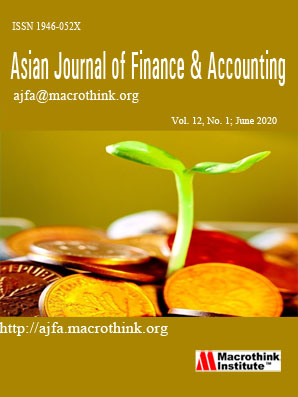The Issue of Transparency in the Financial Statements of Commercial Banks: Empirical Evidence after the Global Financial Crisis
Abstract
The debate on the applicability of Fair Value Accounting has resurfaced after the Global Financial Crisis. This study contributes to this debate by empirically comparing the effects when the fair value changes of financial instruments disclosed in the notes are considered in the primary financial statements. The study’s sample is four major Australian banks and four of the largest American banks and covers the period from 2005 to 2010. The results show that Comprehensive Income of the sample banks is extremely negatively affected by fair value changes. Shareholders’ Equity is also negatively affected, although the effects are not material. These findings indicate that, from a market value perspective, the underlying performance and risks of commercial banks are not properly reflected in the financial statements. By contrast, as a consequence of high holdings of regulatory capital, fair value changes do not trigger violations of Tier 1 Capital Ratio and Total Capital Ratio. Similar results are found for American banks when capital injections from the Troubled Assets Relief Programme are excluded.
Submission of an article implies that the work described has not been published previously (except in the form of an abstract or as part of a published lecture or academic thesis), that it is not under consideration for publication elsewhere, that its publication is approved by all authors and tacitly or explicitly by the responsible authorities where the work was carried out, and that, if accepted, will not be published elsewhere in the same form, in English or in any other language, without the written consent of the Publisher. The Editors reserve the right to edit or otherwise alter all contributions, but authors will receive proofs for approval before publication.
Copyrights for articles published in MTI journals are retained by the authors, with first publication rights granted to the journal. The journal/publisher is not responsible for subsequent uses of the work. It is the author's responsibility to bring an infringement action if so desired by the author.








